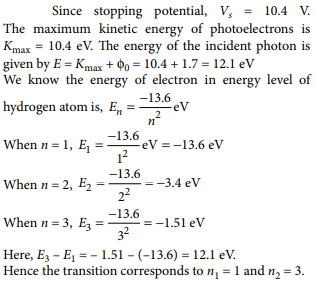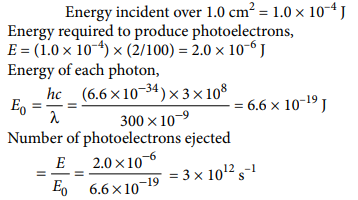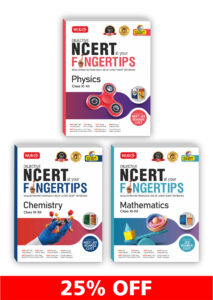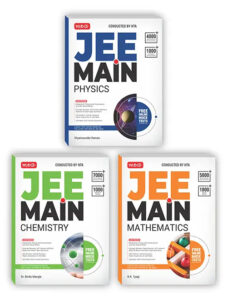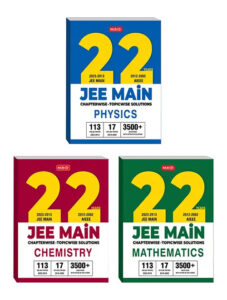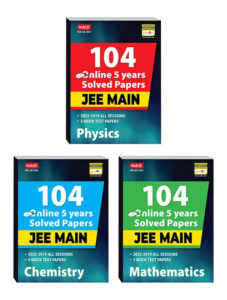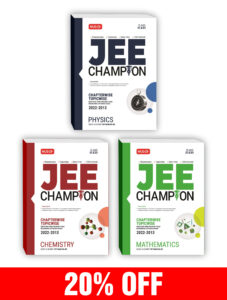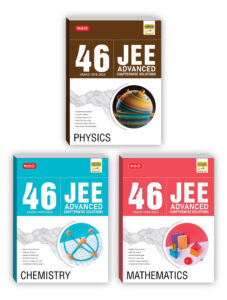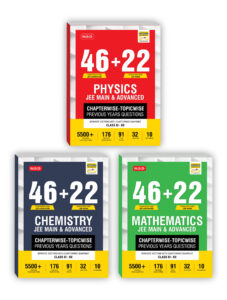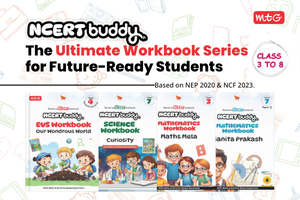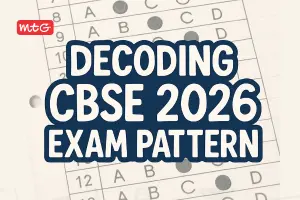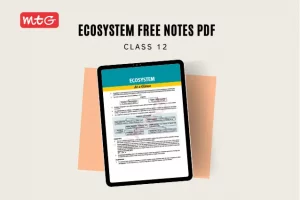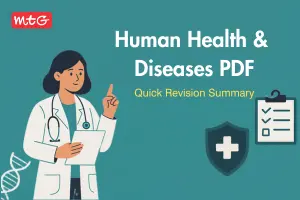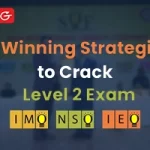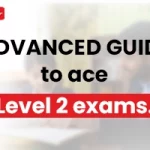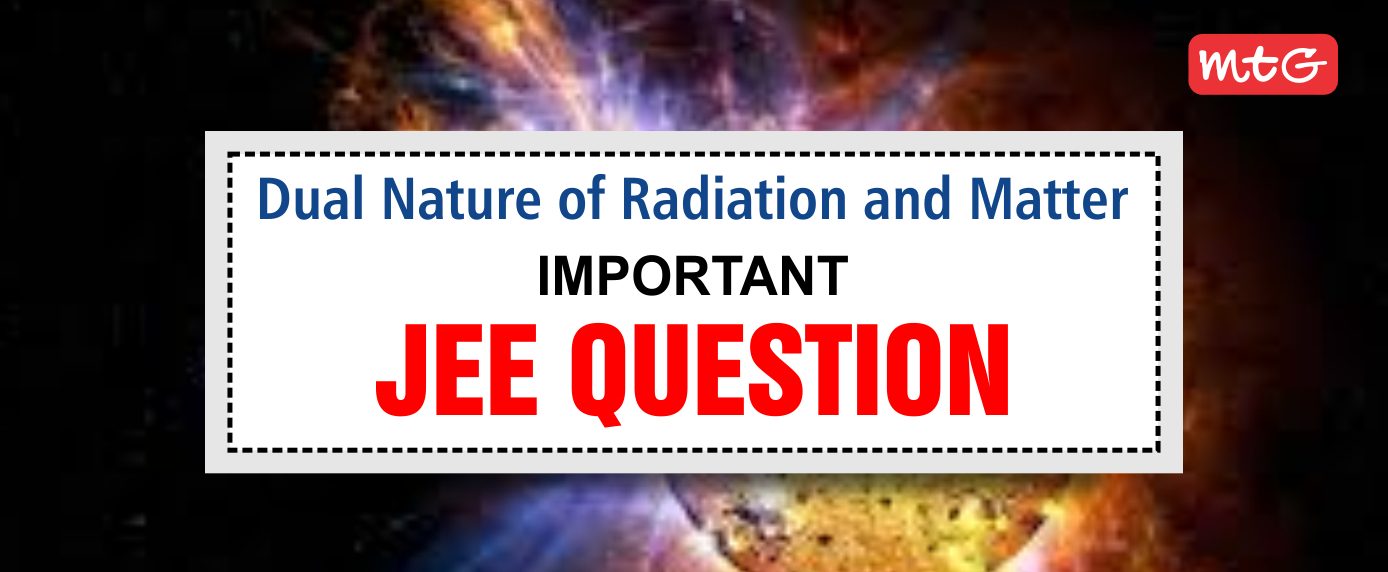
Many important questions are formed in competitive exams like CUET, JEE, NEET, and boards from Class 12 Physics. Below, we have provided Important Questions from Class 12 Physics Unit 7, Dual Nature of Radiation and Matter for your JEE Mains 2023 preparation. You can check it here for revision purposes.
Latest: Electromagnetic Induction and Alternating Currents JEE Questions and Answers
Important: JEE Mains Previous Year Question Papers – For Exam 2023 | Free PDF Download
Also Check out: 30 Days JEE Main Planner to Boost Your JEE Main 2023 Preparation
Practice from – JEE Main Sample Papers 2023 With Answers: FREE PDF Download
Dual Nature of Radiation and Matter Class 12 JEE Mains Questions and Answers
We’ve compiled a list of important questions about the Dual Nature of Radiation and Matter Class 12 physics unit 7 that you should not miss while studying for your JEE Main Exams.
Q.1. The stopping potential for the photoelectron emitted from a metal surface of work function 1.7 eV is 10.4 V. Identify the energy levels in hydrogen atom which will emit the wavelength of radiation used
(a) n1 = 1, n2 = 2 (b) n1 = 1, n2 = 3
(c) n1 = 2, n2 = 4 (d) n1 = 2, n2 = 5
A.1. (b)
Explanation:
Q.2. Let u1 be the frequency of the series limit of Lyman series, u2 be the frequency of the first line of Lyman series, and u3 be the frequency of the Balmer series. Then
(a) u1 + u2 = u3 (b) u2 – u1 = u3
(c) u1 – u2 = u3 (d) υ3 = ½ (u1 + u2)
A.2. (c)
Q.3. The de Broglie wavelength of an electron is the same as that of a 50 keV X-ray photon. The ratio of the energy of the photon to the kinetic energy of the electron is (the energy equivalent of electron mass is 0.5 MeV)
(a) 1: 50 (b) 1: 20 (c) 20: 1 (d) 50: 1
A.3. (c)
Explanation:
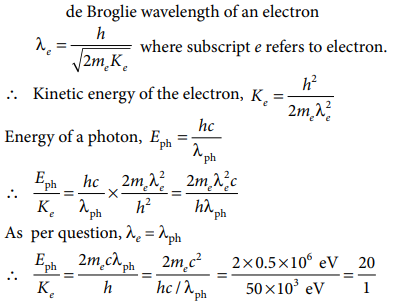
Q.4. Ultraviolet light of wavelength 300 nm and intensity 1.0 W m–2 falls on the surface of a photosensitive material. If two percent of the incident photons produce photoelectrons, then the number of photoelectrons emitted from an area of 1.0 cm2 of the surface is nearly
(a) 2 × 1013 s–1 (b) 3 × 1012 s–1
(c) 4 × 1013 s–1 (d) 4 × 1012 s–1
A.4. (b)
Explanation:
Q.5. X-rays are produced in an X-ray tube by electrons accelerated through an electric potential difference of 50.0 kV. An electron makes three collisions in the target before coming to rest and loses half of its remaining kinetic energy in each of the first two collisions. Neglect the recoil of the heavy target atoms, the wavelength of the resulting photons in the first two collisions is (Take hc = 1243 eV nm)
(a) 49.72 pm; 99.44 pm (b) 47.38 pm; 24.86 pm
(c) 52.24 pm; 49.72 pm (d) 49.72 pm; 24.86 pm
A.5. (a)
Explanation:
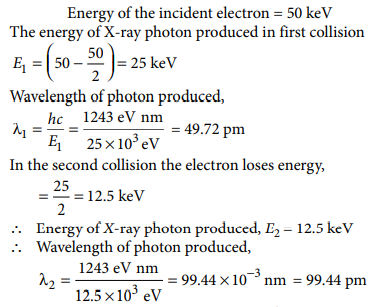
Q.6. Which of the following quantities for a nucleus is independent of its mass number?
(a) Density (b) Volume
(c) Mass (d) Radius
A.6. (a)
Explanation:
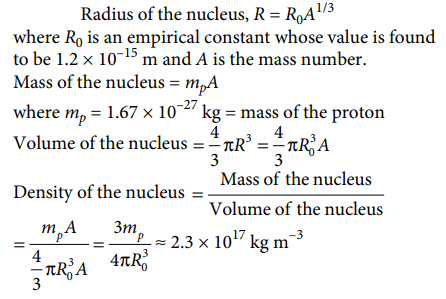
The density of the nucleus is constant and is independent of the mass number and it is the same for all nuclei.
Q.7. The energy of a hydrogen atom in the ground state is –13.6 eV. The energy of a He+ ion in the first excited state will be
(a) –13.6 eV (b) –27.2 eV
(c) –54.4 eV (d) –6.8 eV
A.7. (a)
Explanation:
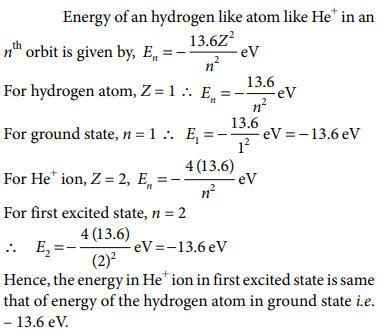
Q.8. The count rate of a Geiger-Muller counter for the radiation of a radioactive material of half-life of 30 min decreases to 5 s–1 after 2 h. The initial count rate was
(a) 80 s–1 (b) 625 s–1 (c) 20 s–1 (d) 25 s–1
A.8. (a)
Q.9. The half-life of the radioactive nucleus is 100 years. The time interval between 20% and 80% decay of the parent nucleus is
(a) 100 years (b) 200 years
(c) 300 years (d) 400 years
A.9. (b)
Explanation:
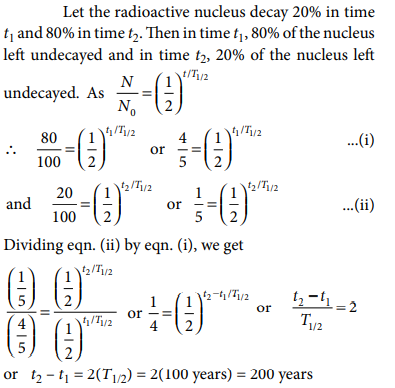
Q.10. The ratio of the de Broglie wavelengths of an electron of energy 10 eV to that of person of mass 66 kg travelling at a speed of 100 km h–1 is of the order of
(a) 1034 (b) 1027 (c) 1017 (d) 10–10
A.10. (b)
Explanation:
For an electron Mass, me = 9.11 × 10–31 kg, Kinetic energy, K = 10 eV = 10 × 1.6 × 10–19 J
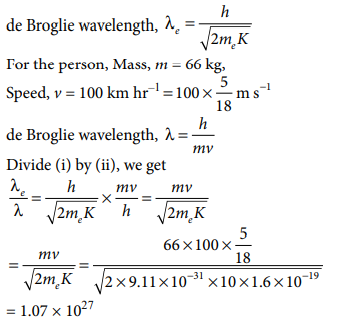
Best JEE Books Recommended by JEE Toppers
Check out some of the best JEE Books recommended by JEE Toppers
- NCERT Textbook
One thing that is strongly recommended is that students prepare using NCERT textbooks. Toppers endorse NCERT as the finest book for JEE Main. NCERT is the foundation for these exams since they cover everything and consist of enormous information. Each and every line of NCERT must be clear and embedded in your mind to know the concepts better.
|
22 Years JEE Main Imagine having 21 years’ worth of experience for JEE Main? That is what you’ll get with this series of Physics, chemistry, and mathematics books. MTG’s 22 Years JEE Main Chapter-wise Topic-wise Solutions Physics is the best question bank having questions from the past 22 years of JEE Main Physics (2022-2013) & AIEEE (2012-2002) which are segregated Chapter-wise Topic-wise. |
|
JEE Champion JEE Champion is a book designed for JEE aspirants to prepare better with the knowledge of topic importance within a chapter. It familiarizes all the JEE aspirants with a wide variety of questions frequently asked in various engineering entrance exams. It covers 10 years of questions for all the major engineering exams. Students can understand the changing pattern of questions asked and can gain mastery over questions asked during exams.
|
|
46+22 Years Chapterwise Topicwise Solutions • 46 Previous Years’ Papers of JEE Advanced/IIT JEE |

